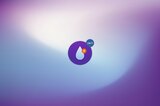
24/7 oxygen saturation monitoring
With viQtor, our 24-hour monitoring solution, we measure, among other things, the oxygen saturation in the blood. We do this with optical sensors in a wearable for the upper arm. This allows the oxygen content in the blood to be read remotely. The measurement is automatic and completely painless.
ViQtor gives a message when the oxygen content drops. By taking the right action immediately, damage to the body can be prevented.
- Oxygen saturation below 90% damages tissues
- Chronic lung disease often leads to low oxygen saturation
- viQtor measures oxygen saturation remotely with photo plethysmography (PPG)
- A measurement is performed every minute, the values are sent directly to our platform every 5 minutes

About viQtor
smartQare has developed viQtor, a unique multi-sensor solution for 24-hour remote monitoring and diagnostics of risk groups. A relevant and affordable tool that puts people first and helps healthcare professionals to organize the healthcare process around patients effectively and efficiently.
viQtor, our solution for 24-hour monitoring of:
- Oxygen saturation
- Heartbeat
- Skin temperature
- Fall detection
- Activities
- Location determination
Why do we measure oxygen saturation?
Oxygen enters our lungs through breathing. contain red blood cells
hemoglobin (Hb) that binds the oxygen in the lungs. The oxygen is transported through the arteries to all tissues throughout the body and released again at the destination.
For some people and at some times it is desirable to check and monitor the percentage of oxygen in the body tissues. If too little oxygen reaches the tissues, this can lead to deterioration.
Normal oxygen saturation values
The arterial oxygen saturation, or saturation for short, is a measure of the
amount of oxygen bound to the hemoglobin in the red blood cells in the arteries. Oxygen saturation (SpO2) is the percentage of hemoglobin that is completely saturated with oxygen. For healthy people, a value of 95-99% is normal.
The optimal value of saturation in unhealthy individuals may vary.
Too little oxygen: desaturation
Values below 90% indicate desaturation. The client or patient then does not breathe enough oxygen or the oxygen exchange between the lungs and the blood does not function properly. With desaturation, the skin can turn blue (cyanosis) and there is a very slow or very fast pulse and/or breathing.
Low oxygen saturation
People with chronic lung diseases such as asthma and COPD may have low oxygen saturation, sometimes less than 90%, without acute
shortness of breath. This is because the body gradually adapts to the oxygen deficiency. Older people generally also have a lower
oxygen saturation.
Desaturation also occurs in heart problems. Fluid can accumulate in the space between the membranes ('fluid behind the lungs') as a result of which the oxygen exchange is less effective.
Nocturnal desaturation
A common form of desaturation is nocturnal desaturation. This comes
including in people with sleep apnea (OSAS and CSAS) where periods of complete respiratory arrest (apnea) or partial respiratory arrest (hypopnea) occur. This can occur up to 100 times per night. As a result, the oxygen level in the blood and tissues drops and the heartbeat becomes irregular.

Oxygen saturation measurement via viQtor
viQtor, our 24-hour monitoring solution, is worn on the upper arm. viQtor
measures vital values with optical sensors. Oxygen saturation is measured 24 hours a day using photoplethysmography (PPG), a technique that uses the absorption of light. Light of two different wavelengths is used for this: red (660nm) and infrared (940nm). The light is emitted by LED in the upper arm. Part of the light is absorbed, part is reflected on the vasculature and is then received by a photodiode sensor. The saturation is then calculated using smart algorithms.
Monitor saturation remotely
viQtor performs a measurement every minute. Every 5 minutes, the saturation values are sent directly via Vodafone's secure NB-IoT/LTE Cat M1 network to our platform in the cloud. The measurements are analyzed on this platform and then stored securely and pseudonymised. The platform is linked to an online dashboard and an app. Healthcare professionals and informal carers can consult the information there.
Make an appointment for a demonstration
Would you like to know more about viQtor, our solution for 24-hour monitoring? Make an appointment for a demonstration and discover what viQtor can do for you.







